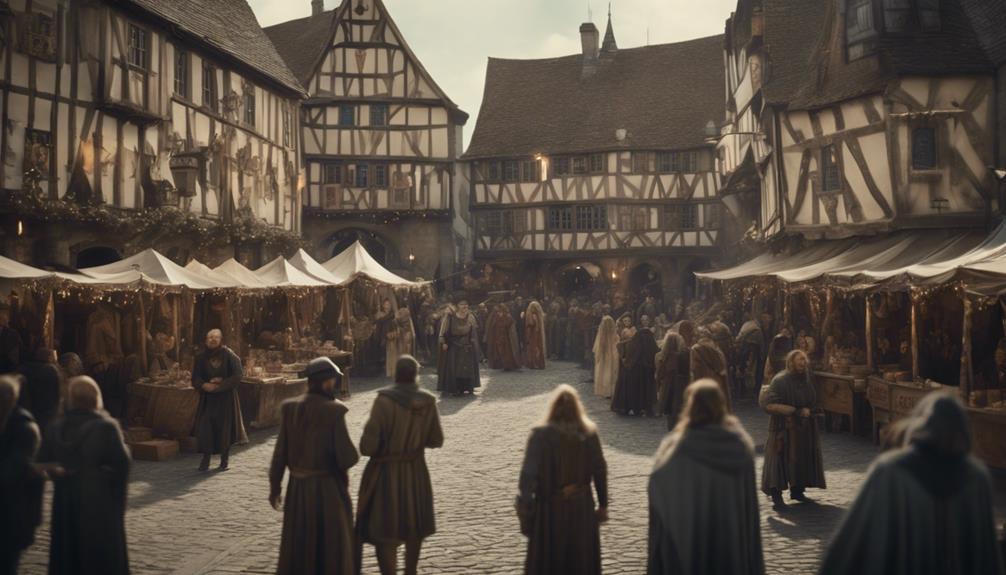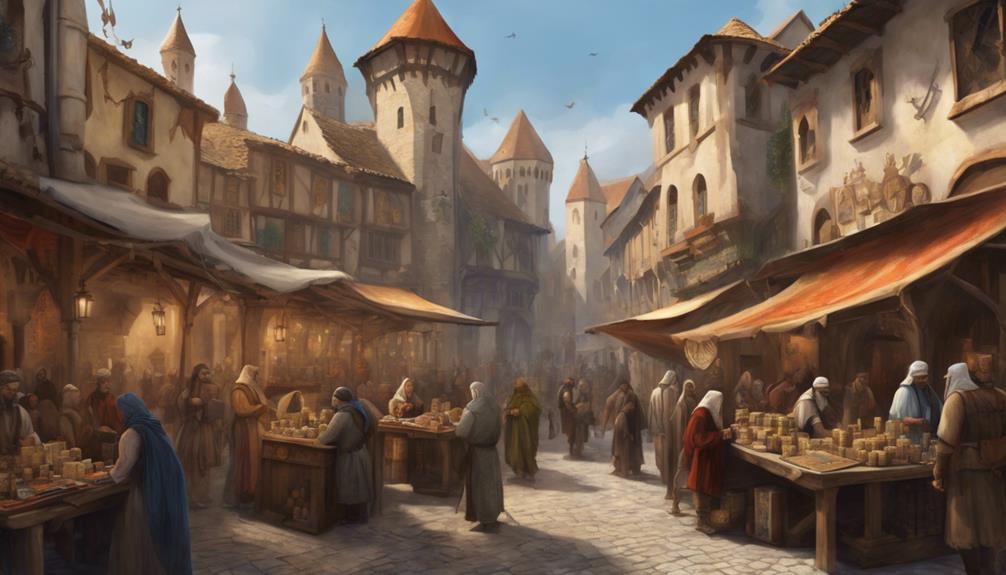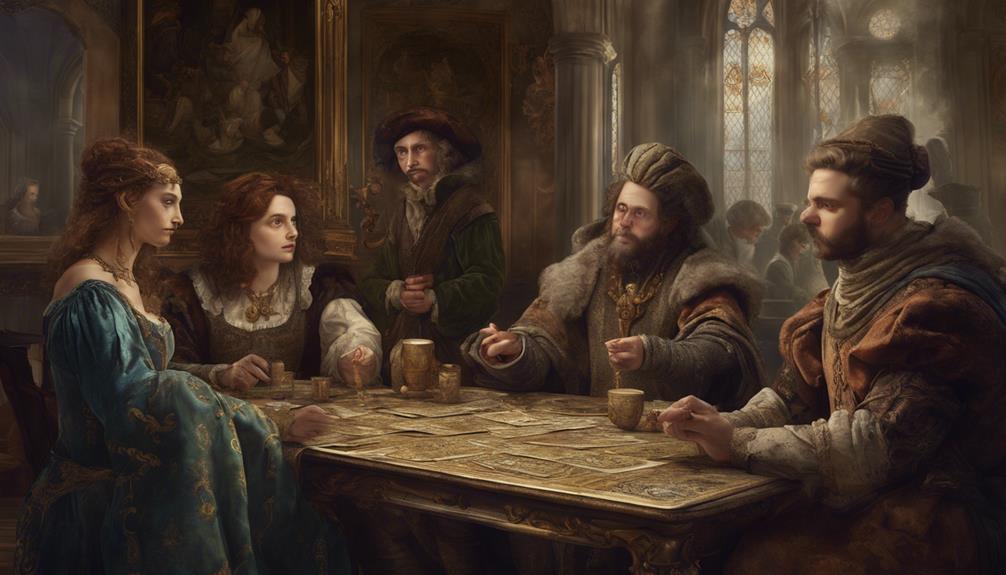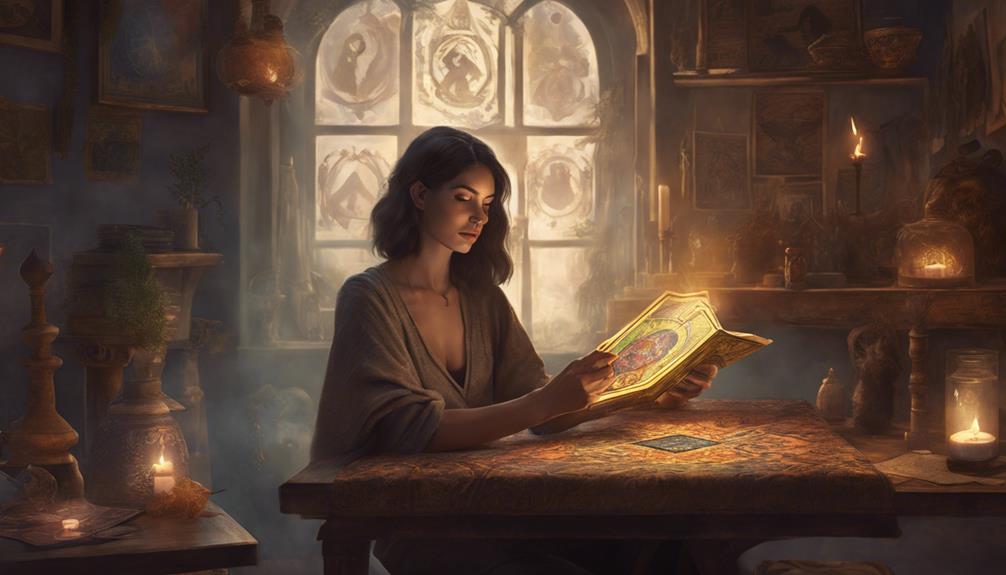When Tarot Cards Were First Introduced to Europe: A Historical Look

The origins of tarot cards have been a subject of debate among historians and scholars. Some believe that tarot cards originated in Europe during the 15th century, likely in Italy or France. These early tarot decks were used for playing card games and did not have any mystical or divinatory significance.
Others argue that tarot cards have their roots in ancient Egypt, pointing to similarities between some tarot symbols and Egyptian hieroglyphs. This theory suggests that the knowledge of tarot cards was brought to Europe through trade routes or other interactions with the Middle East and North Africa.
Despite these differing theories, the exact origins of tarot cards remain uncertain, and their history is a complex and multifaceted topic that continues to fascinate researchers and enthusiasts alike.
Origins of Tarot Cards in Europe
In the early 15th century, Tarot cards made their entrance into Europe, sparking curiosity and intrigue among the nobility and common folk alike. The origins of Tarot cards in Europe trace back to their roots in the rich tapestry of symbolism and mysticism. These cards weren't merely tools for divination but gateways to a domain where the veil between the tangible and intangible grew thin.
The history and development of Tarot cards in Europe are shrouded in mystery, mirroring the enigmatic nature of the symbols they bear. From their humble beginnings as playing cards to their transformation into instruments of spiritual insight, Tarot cards evolved alongside the changing tides of European society. As they journeyed through different lands and cultures, each interpretation added a layer of complexity to their intricate web of meanings.
The allure of Tarot cards lies in their ability to transcend time and space, offering a glimpse into the boundless possibilities that await those who seek guidance. In the intricate designs and archetypal imagery of the Tarot, one discovers not only a reflection of the past but a roadmap to the future.
Evolution of Tarot Symbolism
The intricate evolution of Tarot symbolism reveals a tapestry of meanings woven through time, offering seekers a profound glimpse into the interconnected web of archetypes and metaphors. Over the centuries, Tarot symbolism has undergone a metamorphosis, with evolving interpretations giving rise to rich layers of symbolic meanings. What once may have been seen as simple images on cards has transformed into a complex system of symbols that speak to the subconscious mind in profound ways.
Each card in the Tarot deck carries its own symbolic significance, representing universal themes that resonate across cultures and eras. The Fool, The Magician, The High Priestess – these archetypal figures embody timeless wisdom and truths that transcend mere words. As Tarot has journeyed through history, its symbolic meanings have adapted and expanded, reflecting the ever-changing perspectives of those who seek guidance from its enigmatic depths.
In delving into the evolving interpretations of Tarot symbolism, one discovers a mirror reflecting the human experience back in symbolic form, inviting introspection, growth, and a deeper understanding of the mysteries that shape our lives.
Cultural Influences on Tarot Development

Reflecting the diverse tapestry of human civilization, cultural influences have intricately shaped the development of Tarot, infusing the cards with a myriad of symbolic nuances and interpretations. Throughout history, various cultural elements have contributed substantially to the evolution of Tarot, imbuing the cards with layers of meaning that resonate across time and space.
- Egyptian Mysticism: The mystical traditions of ancient Egypt, with their rich symbolism and esoteric knowledge, provided a foundational influence on the imagery and symbolism found in Tarot cards.
- Medieval Christian Symbolism: The Christian symbolism prevalent during the Middle Ages added layers of religious significance to the Tarot, influencing the representation of virtues, vices, and archetypal figures.
- Islamic Mysticism: The mystical traditions of Islam, particularly during the Moorish rule in Spain, introduced elements of numerology and philosophical concepts that found their way into Tarot interpretations.
- Romani Culture: The cultural practices and spiritual beliefs of the Romani people, who are often associated with Tarot reading, have contributed to the mystical aura surrounding the cards and their interpretations.
Spread of Tarot Across Europe
The spread of Tarot across Europe was a tale as intricate as the cards themselves. From its origins in Italy to its embrace in France, Tarot found its way into the fabric of various cultures, each adding a unique twist to its symbolism and usage.
Spain too played a role in this journey, weaving its own narrative into the rich tapestry of Tarot's European expansion.
Tarot in Italy
Amidst the vibrant cultural landscape of Italy during the Renaissance, the intricate art of Tarot found its roots and began its journey across Europe. Tarot in Italy bore the hallmark of Italian origins, enriched by the Renaissance influence that permeated every facet of society. As Tarot spread beyond Italy, it carried with it the essence of mystery and symbolism that captivated the hearts and minds of individuals seeking deeper insights. The allure of Tarot transcended geographical boundaries, enchanting seekers of wisdom across Europe with its enigmatic allure.
- Tarot decks in Italy featured elaborate artwork and symbolic imagery.
- Italian scholars and intellectuals were drawn to Tarot for its allegorical significance.
- The popularity of Tarot in Italy paved the way for its integration into various cultural practices.
- The intricate symbolism of Tarot cards reflected the philosophical and spiritual inquiries of the Renaissance era.
Tarot in France
Enriching the cultural tapestry of France, Tarot cards arrived as enigmatic messengers from Italy, enchanting the hearts and minds of seekers across Europe with their intricate symbolism and mystical allure. French tarot traditions took root, blending with the rich artistic and intellectual heritage of the nation.
Tarot's popularity in France soared, with the cards becoming a beloved pastime for many, offering insights into the past, present, and future. The French embraced the Tarot not only for divination but also as a tool for self-reflection and personal growth.
As Tarot decks evolved in France, unique variations emerged, each reflecting the artistic and cultural nuances of the region. The enigmatic allure of Tarot continued to captivate the French imagination, solidifying its place in the country's spiritual and cultural landscape.
Tarot in Spain
With the vibrant tapestry of Tarot weaving its intricate patterns across Europe, Spain found itself swept up in the mystical currents that had emanated from Italy, embracing these enigmatic cards as harbingers of insight and inspiration.
Spanish tarot traditions have deep roots that intertwine with the cultural and historical fabric of the nation, shaping unique interpretations and practices. The historical significance of Tarot in Spain extends beyond mere fortune-telling, delving into spiritual exploration and personal growth.
Tarot decks in Spain often showcase rich imagery influenced by the country's diverse heritage, adding layers of symbolism and meaning to each card. The Spanish approach to Tarot reflects a balance between tradition and innovation, offering a glimpse into the profound connections between the cards and the human experience.
Tarot Cards and Divination Practices
In the domain of divination practices, Tarot cards have long been revered for their mystical insights and profound symbolism. The historical significance of Tarot in divination dates back centuries, with roots in Europe and the Middle East. The Tarot deck consists of 78 cards divided into major and minor arcana, each card carrying its own unique meaning and symbolism. Below is a table highlighting the major arcana cards and their traditional interpretations:
| Major Arcana Card | Traditional Interpretation |
|---|---|
| The Fool | New beginnings, innocence |
| The Lovers | Love, relationships |
| The High Priestess | Intuition, mystery |
| The Emperor | Authority, structure |
| The Tower | Sudden change, upheaval |
These cards are often used in various divination practices such as Tarot readings, where the reader interprets the cards' positions and relationships to provide guidance and insight into the querent's life. The art of Tarot divination continues to captivate individuals seeking spiritual enlightenment and introspection.
Impact of Tarot on European Society

Stirring curiosity and fascination, what societal transformations did the introduction of Tarot cards bring about in Europe? The impact of Tarot on European society was profound and multifaceted, shaping cultural norms and influencing the way people viewed the world around them. The significance of Tarot extended far beyond mere divination practices; it challenged traditional beliefs and encouraged individuals to explore new perspectives.
- Breaking Hierarchical Structures: Tarot challenged rigid societal hierarchies by offering a tool for introspection and self-discovery, empowering individuals to question established power dynamics.
- Encouraging Open-mindedness: The introduction of Tarot encouraged a more open-minded approach to spirituality and mysticism, fostering a culture of acceptance and exploration.
- Inspiring Artistic Expression: Tarot's rich symbolism inspired artists and thinkers, leading to the creation of mesmerizing artworks and philosophical discourse.
- Shifting Perceptions of Fate: By introducing the idea of choice and personal agency, Tarot played a role in reshaping perceptions of fate and destiny, emphasizing the role of individual actions in shaping one's future.
Mystique Surrounding Tarot History
The enigmatic allure of Tarot's historical origins casts a beguiling veil over its past, shrouded in mystique and intrigue that beckons exploration. Within the historical context of Tarot, its mysterious origins have fueled centuries of fascination and speculation. Scholars and enthusiasts alike are captivated by the enigmatic journey of Tarot cards from their obscure beginnings to their widespread use in modern divination practices.
The intricate tapestry of Tarot's history weaves together influences from diverse cultures, blending symbolism and mysticism into a fascinating narrative. The origins of Tarot are veiled in secrecy, with theories ranging from ancient Egyptian practices to medieval European mysticism. This air of mystery surrounding Tarot's inception adds to its allure, drawing individuals into a domain where the past intertwines with the present, offering glimpses into the unknown.
As seekers explore the depths of Tarot's past, they encounter a rich tapestry of symbolism and meaning, each card a doorway to hidden truths and inner wisdom. The historical context of Tarot provides a fertile ground for exploration, inviting all who are drawn to its mysteries to commence on a journey of discovery.
Modern Resurgence of Tarot Reading

Enthusiastically embraced by a new generation seeking insight and guidance, the modern resurgence of Tarot reading has captivated individuals worldwide with its profound symbolism and intuitive wisdom. In today's era, Tarot has experienced a revival, drawing people from all walks of life into its enigmatic world. This resurgence is marked by several trends and interpretations that add a contemporary flair to this ancient practice:
- Diverse Tarot Decks: Modern Tarot enthusiasts can choose from a wide array of decks, each with its own artistic style and symbolism.
- Online Tarot Readings: The digital age has ushered in a new wave of Tarot readings, making this ancient practice accessible to anyone with an internet connection.
- Psychological Approach: Many modern practitioners view Tarot through a psychological lens, using the cards as tools for self-reflection and personal growth.
- Incorporation of New Meanings: While honoring traditional interpretations, modern Tarot readers infuse new layers of meaning into the cards, reflecting the evolving consciousness of society.
This revival breathes fresh life into an age-old practice, offering seekers a pathway to explore the depths of their souls and the mysteries of the universe.
Frequently Asked Questions
How Were Tarot Cards Used by Different Social Classes in Europe During the Middle Ages?
During the Middle Ages, Tarot cards were utilized by various social classes in Europe. They served as tools for introspection and divination, shaping cultural beliefs and societal norms. The cards' interpretations reflected the diverse social perceptions of the era.
Were There Any Legal Restrictions or Prohibitions on the Use of Tarot Cards in European Countries During Their Early Introduction?
Legal implications and cultural perceptions varied regarding tarot cards' early use in Europe. Some regions imposed restrictions due to superstition, while others embraced the practice. Despite occasional bans, the allure of tarot endured through the ages.
Were There Any Famous Historical Figures or Rulers in Europe Who Were Known to Use Tarot Cards for Divination or Guidance?
Royal patrons sought spiritual guidance through tarot readings. Many historical figures, including rulers, were known to use tarot cards for divination. The cards provided insight and direction in decision-making, influencing the course of history.
How Did the Symbolism on Tarot Cards Change Over Time as They Spread Across Different Regions of Europe?
Symbolism on tarot cards evolved like a river, weaving through diverse landscapes of Europe. Each region's cultural influence added new colors to the tapestry, shaping meanings and interpretations. The cards became a mirror of society's soul.
Were There Any Notable Controversies or Scandals Surrounding the Use of Tarot Cards in European Society During Their Early Introduction?
Controversies and scandals surrounded tarot cards in early European society. Notable figures from various social classes faced legal restrictions and prohibitions. Even famous rulers debated their use for divination and guidance. The symbolism spread across regions during the Middle Ages.











